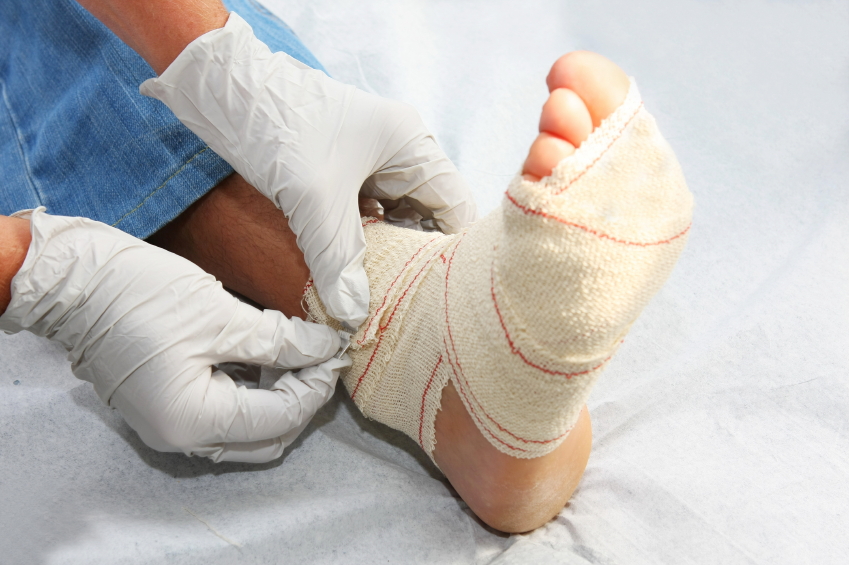In the last few years, close to 130 million employees on both the federal and state levels were covered by worker’s compensation and many require the use of durable medical equipment.
According to the Occupational Safety and Health Association, companies pay around one billion dollars a week to cover medical costs and worker’s compensation for employees. The coverage seems well worth it in the workforce of construction and labor. But in the sedentary occupations such as secretaries or computer work, it has been an excessive cost for a minimal risk job.
The Economic Policy Institute reports there are 23,000 work related injuries per day in the United States. They also report that many workers develop illnesses on the job. These illnesses are costing employers even more money than injuries.
Most companies agree, however, that worker’s compensation is an effective way of avoiding a lawsuit from an employee. So just what are worker’s compensation benefits?
What is Worker’s Compensation Benefits?
Worker’s compensation insurance is purchased by employers. It is a temporary insurance program. It covers medical costs to employees who are injured while performing duties related to the job.
It can also replace part of the income that would have been made by the employee if they were able to continue working. In worse case scenarios, it can provide compensation to family members if an employee is killed on the job.
Worker’s compensation may also pay for any durable medical equipment needed by the employee to assist them with recovering from their injury.
The worker’s compensation program is state-mandated and employers who do not provide worker’s compensation can be susceptible to fines and even lawsuits.
What Types of Injuries Are Compensated?
Not every injury is covered under worker’s compensation. If you are an undocumented citizen, agricultural worker, or nanny, you are not covered for job-related injuries.
Most other types of jobs are covered. If the injury can be proven to be directly related to the job, it is covered. There are even times, like at company social events, where injuries can be covered, especially if the social event is a requirement of the job.
An example is if an employee falls off a ladder and breaks his leg while building a house for a construction company. Or, if someone develops carpal tunnel syndrome due to too much time spent typing or on the computer.
While there are many cases of fraud among scam artists trying to get money based on false injuries, most cases are validated.
Some injuries like this will require medical devices or equipment to help them in recovery. This equipment is often called durable medical equipment.
What is Durable Medical Equipment?
Durable medical equipment refers to items needed to assist people who are recovering from an injury they obtained while at work.
The equipment must be reusable and mostly for use in the home of the patient, or a long-term recovery unit of a medical institution. With in-home care services on the rise, so are the use of medical equipment needs within the home.
If a work-related accident requires in home care, worker’s compensation insurance can cover the costs of equipment needed by the patient and the caregiver.
Examples of Durable Medical Equipment
Common types of durable medical equipment include crutches, canes and walkers. Oxygen tanks and nebulizers are also considered durable medical equipment.
For those diagnosed with diabetes, blood glucose strips and monitors qualify as medical equipment allowed by worker’s compensation insurance.
Ventilators, hospital beds, and positive airways pressure machines are on this list. A person would also be allowed to have chair lifts, commode chairs and wheelchairs. Other thinks that are one-time use, such as prepackaged medication, would not count as durable medical equipment, but might still be covered under worker’s comp.
The list of durable medical equipment is extensive but this gives you an idea of the types of equipment allowed. If they are determined to be medically necessary for use in the home of the patient, and that it is necessary for treatment in recovery, it will likely qualify.
Getting Durable Medical Equipment for Worker’s Compensation Patients
A face to face encounter with a patient is required in order for you to prescribe durable medical equipment. Once you determine your patient needs the device, you put in an order. Most doctors file claims for the patients whose insurance requires it.
There are times when insurance companies require the patient to pay for the equipment up front and be reimbursed for all the costs, or partial costs.
Some insurance companies require an adjuster to determine whether medical equipment is necessary. A good example is with Transcutaneous Electronic Nerve Stimulators (TENS). Some adjusters will attend actual patient visits and view x-rays before deciding as to whether the equipment is beneficial to the patient.
Once an adjuster agrees it is needed, the insurance company will likely pay the full amount.
You can acquire the assistance of specialists who provide the equipment for you. They can also assist with the claims and offer many benefits that ease your workload. These companies are like those who specialize in medication dispensing.
Instead of dispensing medications, however, they are dispensing durable medical equipment.
The Future of Durable Medical Equipment
Equipment used in helping people recovery from injuries, whether at work, at home or elsewhere, is expected to grow at an enormous rate. According to Grand View Research, the global market for durable medical equipment is expected to reach 242 billion by the year 2024.
Personal mobility devices are among the large types of equipment being needed by patients.
With the number of worker’s compensation cases expected to increase dramatically, you can also expect the number of care providers needed to increase.
When you first start working with a patient who has a work-related injury, it is just you, the patient, the adjuster and the company. Depending on the injury, you may also be looking at adding a case manager, physical therapist, occupational therapists, vocational therapists and more.
Therefore, it is even more encouraging to utilize the services of specialist companies who can take the reins on everything related to the case. This means they can work with the insurance companies, they can provide the medical equipment needed for recovery, and they can even help with billing and collections.
With your worker’s compensation patient numbers expected to increase, the number of durable medical equipment needs will increase also. Do what you can to minimize paperwork while maximizing time with your patients.




